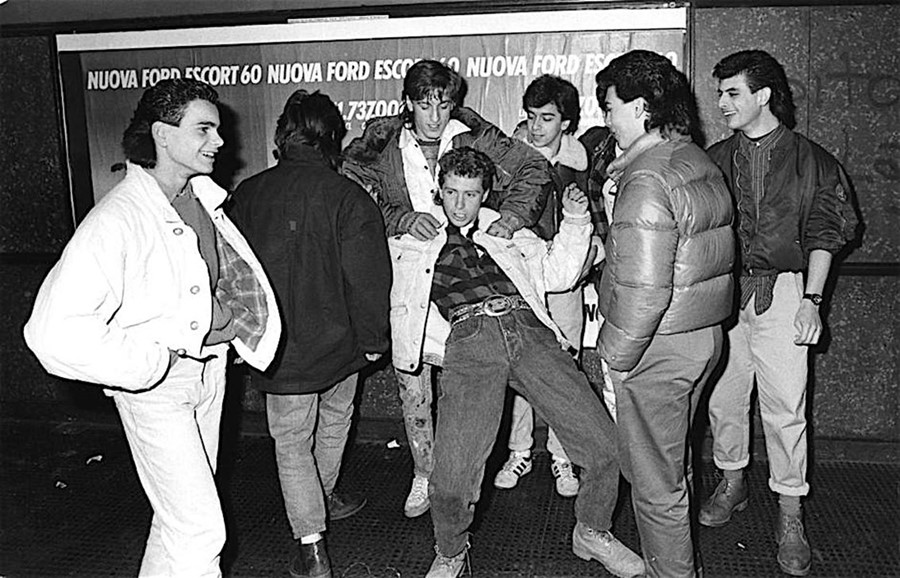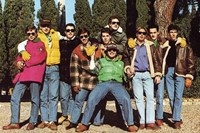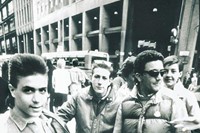We trace the history of a forgotten 1980s Milanese movement which prescribed eating burgers and wearing puffer jackets to represent forward-facing cool
The pairing of brightly coloured Moncler puffer jackets with blue turned-up Levi’s 501s and Timberland boots is a sartorial hybrid if ever there was one, and it's perhaps not a combination you’d expect to gel. In 1980s Italy, however, it formed the basis of a distinctive look created by a group of middle and upper-class Milanese teenagers called the paninari, and it soon spread throughout the whole of Italy to become a fully fledged style subculture. As less regulated markets instigated a meteoric rise in consumerism, these youths strove to distinguish themselves as living in the fast lane, with access to global brands at their fingertips. Alongside the political backdrop of Reagonomics and Thatcherism, Berlusconi transmitted messages of consumerism across Italy via his new business venture, the television. Italian adolescents were targeted with American movies, sitcoms and cartoons, which became extraordinarily popular as they were diffused through private (and legally ambiguous) TV channels such as Italia 1.
This, in turn, influenced their style: while other urban youth movements like punk and new wave were defined by their anarchistic identity signatures, the paninari donned their own status symbols – and they were brightly coloured, heavily branded, and thrown together in a very Italian fashion. Unlike the underground culture of coexisting movements, their loitering around Milanese sandwich shops, Timberland-booted feet resting nonchalantly upon Vespas, was a loud and proud performance. These bold youths made a sartorial stand against the drabness of urban life and political strife that had hit mid-century Italy, commanding a great deal of attention in the process. Their legacy lives on in the form of a Pet Shop Boys song – and they most certainly earned it.
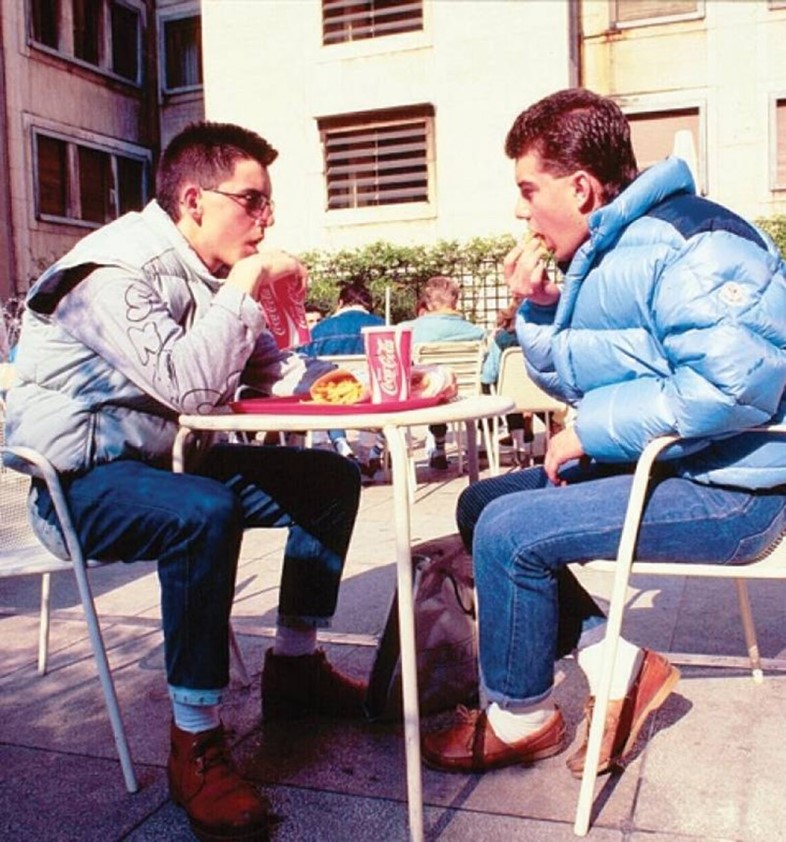
Fast Food Fanatics
Rejecting the slow-food culture of Italy, to these teenagers American fast food chains were as exciting a concept as street food pop-ups are to Londoners today. At the time, the fastest Italian food you could find was the panino, a sandwich, and it soon became the youth scene’s food of choice. One of the first spots that began to provide this avant-garde fare was the cafê Paninaro in Milan, the locale from which they later derived their name. The Paninari's meeting place soon transferred to Piazza San Babila, where the brand new Italian fast food chain Burghy had opened up its first outpost, latching onto the burger obsession gathering momentum across the peninsula.
Their large assemblages in these fast food haunts caused the culture to subsequently be christened paninaro by the Torinese newspaper La Stampa, its devout followers paninari. The group’s epithet went far beyond acknowledging their favourite hangout, however, encapsulating the values underlying the movement – it symbolised the glamorised idea of the fast life they presumed their transatlantic counterparts were living. In essence, purchasing a sandwich-to-go for the moped ride home represented the antithesis of a three-hour-long pranzo with nonna, a tradition so cherished by the group's culture.
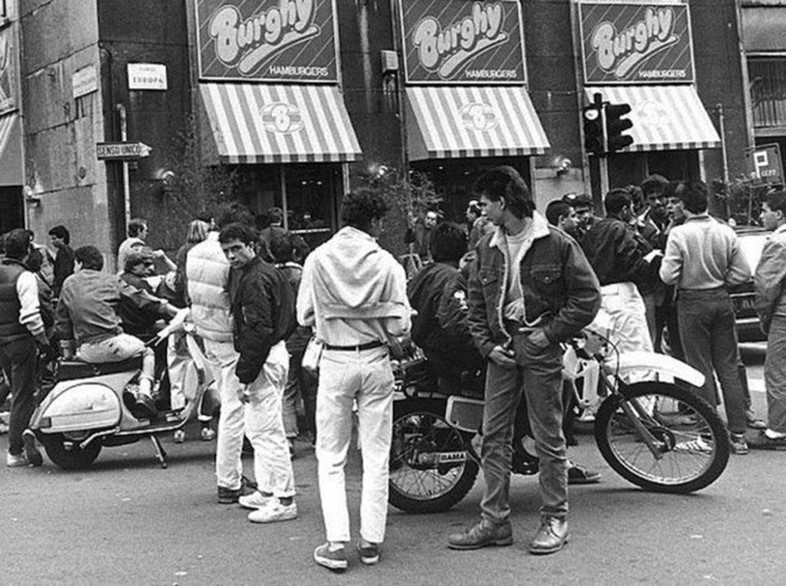
The Bolder the Brand, the Better
While the punks were defined by rebellious DIY ornamentation and a makeshift aesthetic, the paninari made no attempt to detach themselves from the fashion mainstream: their sartorial identity was all down to its idiosyncratic composition. They embraced a sporty Americana look, worn with unmistakeable Italian panache. Blue Levi’s 501s were rolled up at the ankle to reveal Burlington Argyle socks inside Timberland boots or deck shoes, and paired with By American or Best Company sweaters, draped around the shoulders and tied at the chest.
That most Italian stamp of identity, the Moncler puffer jacket, was the preferred choice of outerwear, and no colour was too bright when they had Vuarnet or Ray-Ban sunglasses shielding their eyes. Despite avoiding classic Italian elegance, the paninari didn’t discriminate against Italian designers – burgeoning labels Armani and Versace proved popular for logo jeans, and myriad other home-grown luxury brands, like Fiorucci, Trussardi, Stone Island and CP Company, were mixed into their look and worn over Naj-Oleari underwear. The most desirable accessory for a paninaro was a flashy Rolex Daytona watch, causing a demand for shipments to Italy so high that its price inflated globally.
Acquisition of these designer status symbols, combined with a modern day sense of sprezzatura, or ‘studied nonchalance’, was how these wealthy youths found creative self-affirmation. Even if you had this look down to a T, you were nothing if you couldn’t zoom from one Burghy store to another on your own pair of wheels. The number one motorcycle to drive was the Zundapp KS125, which boasted a colourway to rival that of Moncler’s jackets, but the Yamaha XT600 and Suzuki DR600 were guaranteed to win you just as much respect from piazza to piazza.
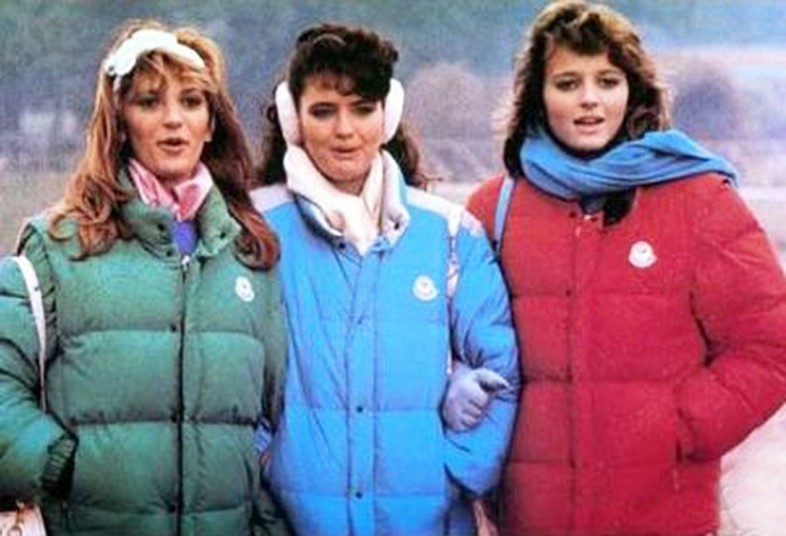
Media and Musical Muses
As with any youth culture, music formed an integral part of the paninaro's identity. 1980s synthpop was their preferred genre, in particular the music of New Romantics such as favourites Duran Duran, whose song Wild Boys inspired a periodical by the same name, dedicated to the movement. Other songs favoured by the paninari were Wham!’s The Edge of Heaven, Samurai by Michael Cretu and C’mon! C’mon! by Bronski Beat.
Never ones to shy away from media attention, they welcomed the chance to be featured in Italian publications, and many periodicals dedicated to the trend began to emerge, fuelling their popularity. The most notable among them were Paninaro and Preppy, which were filled with themed comics, advertising, fashion articles and reader submissions. Perhaps not surprisingly, Italians jumped at the chance to mock the apparent shallowness of the subculture, and comedian Enzo Braschi forged an entire TV comedy show, Drive-In, based upon the teens.
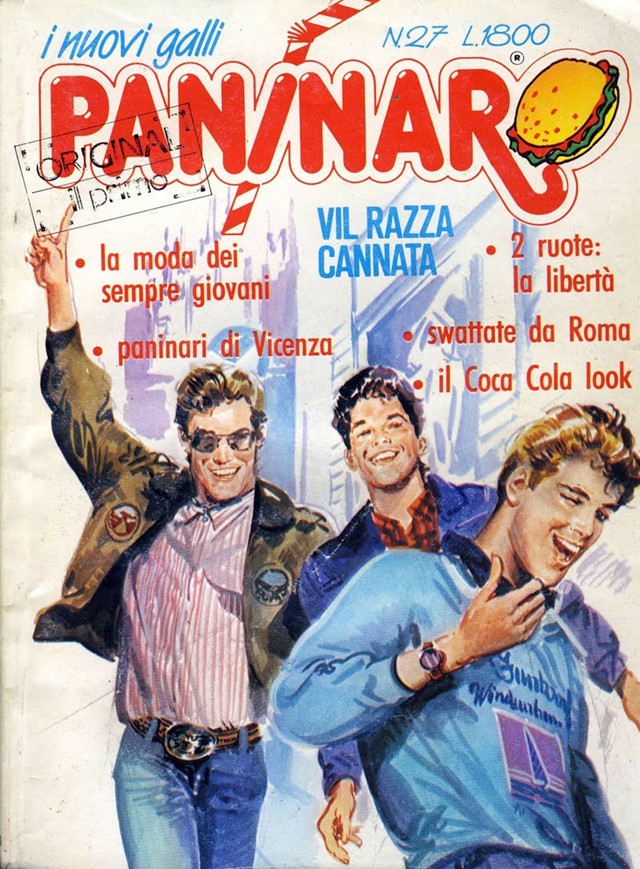
Undoubtedly, the paninari’s proudest moment came in 1986, when the Pet Shop Boys released their song Paninaro, inspired by the subculture. Its lyrics perfectly encapsulate everything its followers enjoyed: “Girls, boys, arts, pleasure,/ Food, cars, travel, food, cars, travel, travel,/ New York, New York, New York,/ Armani, Armani, A-A-Armani, Versace, Cinque”.
